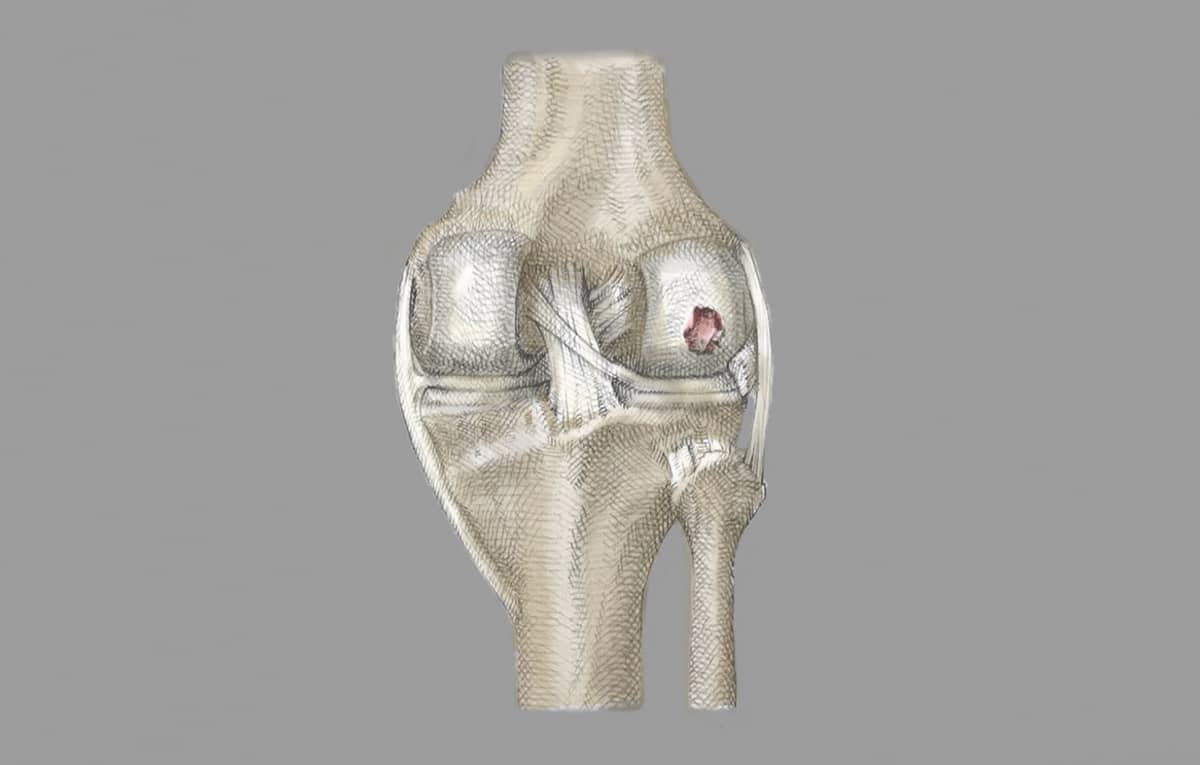OCD: Misnamed, But No Longer Mistreated
Kids often get knee pain. When it persists, an X-ray may show a lesion of the articular cartilage: the bearing surface of the joint. That lesion is usually called Osteochondritis dissecans, a terrible and misleading name that implies inflammation (itis) and drying out (dissecans), though neither is present in the condition. Here is what it usually is and here is our preferred method of treatment.

Original illustrated artwork by: Katerina Salsman
Most commonly in adolescent knees, a portion of the weight-bearing surface of the joint—the articular cartilage, with a small layer of underlying bone—becomes unstable or completely dislodged. This leads to pain and swelling.
Spontaneous healing can occur when the person is very young. But if it shows up in the teen years, the symptoms often become worse. An X-ray or MRI reveals the damage, and a decision about whether to wait for healing or repair the lesion must be made. When surgery is chosen—usually based on continued pain and a desire to return to sports—various methods are traditionally employed. These include pinning the loose bone back in place; microfracturing the base of the lesion to stimulate healing; cartilage replacement; or complete cartilage and bone replacement.
Unfortunately, none of these has a consistently high rate of uniform healing. The reason is that the bone and cartilage may be partially “dead”—a condition which led to the lesion in the first place. Re-fixing abnormal tissue has an uncertain outcome. The loss of active time, coupled with the frustration of parents, coaches, and teammates around a player’s continued pain and swelling, stimulated us to design another approach—articular cartilage paste grafting—in 1991. Long-term data confirms the success of the paste graft treatment in these lesions.
Articular cartilage paste grafting involves harvesting healthy bone, as well as cartilage and progenitor cells from the intercondylar notch of the knee (it grows back after harvest). This material is smashed into a paste. After the base of the OCD lesion is “morselized” (super microfractured deep into the marrow), the paste is applied. When this repair is exposed to continuous passive motion by a continuous passive motion (CPM) machine, new cartilage forms to repair the abnormal area.
Even in large lesions that have failed other methods, the paste graft can be applied successfully. There is no commercial product involved, and no harm done by this attempt at repair. In fact, the procedure can be repeated if the healing is incomplete.
OCD occurs not just in the knee, but in the ankle and elbow as well. While the cause is still unknown, the same treatment is possible. The frustrating, painful years of missing years of high school sports—while waiting for nature to heal what nature has damaged—are over.
Article originally published January 27, 2016. Updated & republished October 3, 2021 with new image & video content updates.
Recovery story from patient who received the Articular Cartilage Paste Graft repair for her OCD lesions
More on Hannah's story and ankle treatment details here
